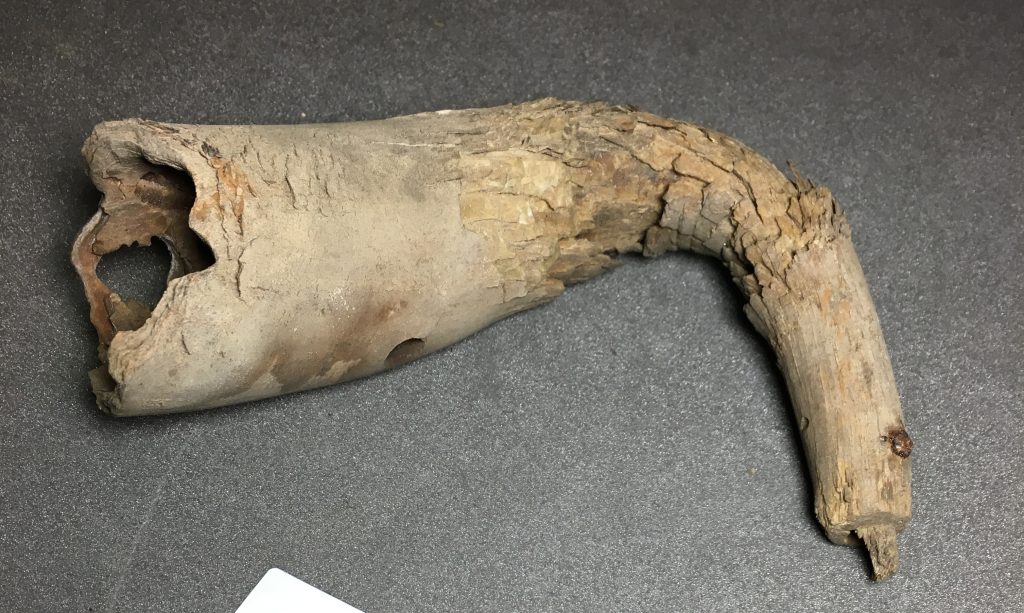Some of the items preserved in the Petrie’s collection can be pretty surprising and, every so often, a search through the Petrie’s online catalogue can reveal some unexpected delights amongst the more usual ceramic vessels and jewellery fragments.
I took a look at one such example recently during one of our Petrie Museum research days. UC71550 is a cone of animal fat or grease. Incredibly this object, dating from the Roman period, is still sticky and slowly oozing – ensuring it remains stuck fast to the modern glass plate it rests upon.

The fat is blackened with soot or dirt, with a thick plaited piece of string or cord protruding from one end. Egypt is well-known for its excellent preservation conditions when it comes to organic materials – this is why so many examples of papyri and textiles from the Roman period, and earlier, are in collections of Egyptian artefacts. However, this object represents a truly rare and unusual survival.

It’s in the shape of an animal (likely cattle) horn, which would have been the original container for the grease. There are in fact other horns from the Roman period in the Petrie, giving us an idea of what this object originally looked like.

This amazing survival also presents us with a bit of a mystery – what is this object? Perhaps the cord that sticks out of the top represents a wick, making this artefact the remains of an oil lamp, with the horn originally suspended from a hook or sat in a lamp stand. Alternatively, the fat could have been used as lubrication during some sort of commercial activity or industrial process, with the horn a readymade container for the grease and the rope a makeshift brush to apply the fat as necessary.
Whatever the original purpose of this object, its rarity means it represents the kinds of objects that no doubt existed elsewhere in the Roman Empire but just do not normally survive within the archaeological record.
